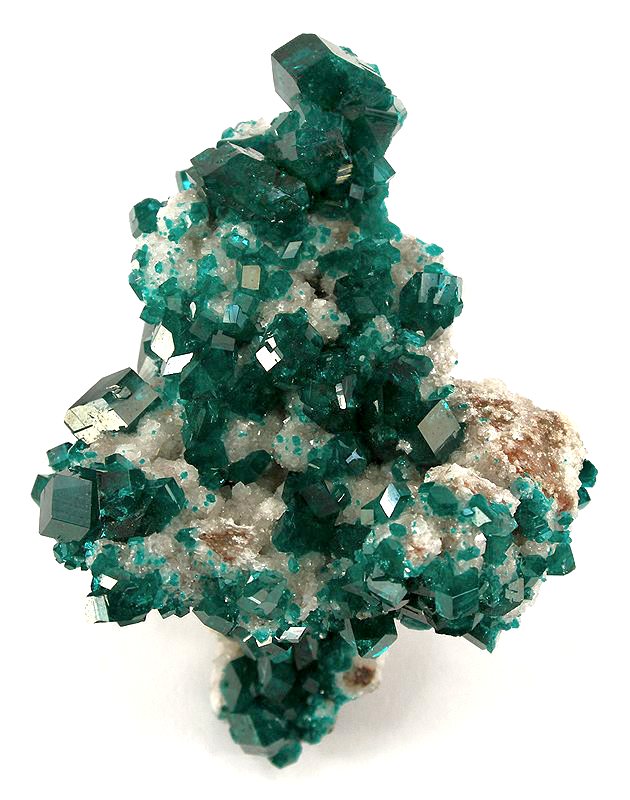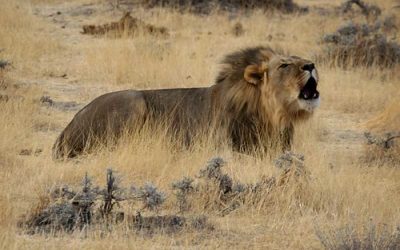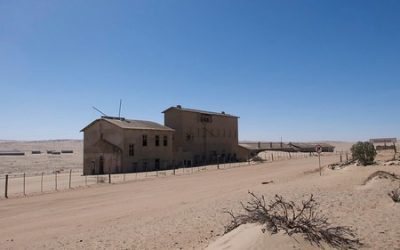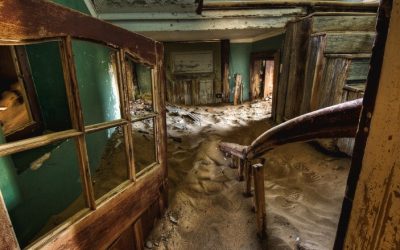Best Seasons to Visit Namibia
Namibia is a captivating destination known for its breathtaking landscapes, diverse wildlife, and unique natural beauty. Choosing the best season to visit can enhance your experience, whether you want to see vibrant wildlife migrations, explore rugged deserts, or enjoy comfortable weather. Understanding the climatic patterns throughout the year will help travelers plan their perfect adventure in this extraordinary country.
Dry Season (May to October)
The dry season, from May to October, is considered one of the best times to visit Namibia. During these months, the weather is typically clear and sunny, creating ideal conditions for wildlife viewing and outdoor activities. The lack of rain results in sparse vegetation, making animals more concentrated around water sources and easier to spot in national parks like Etosha. This period also offers cooler temperatures, especially in the early mornings and evenings, enhancing comfort for travelers exploring deserts, dunes, and savannahs. Visiting Namibia during the dry season provides a prime opportunity to witness its breathtaking landscapes and abundant wildlife under optimal conditions.
Wet Season (November to April)
The wet season in Namibia, running from November to April, offers a unique experience for travelers seeking lush landscapes and vibrant wildlife. During this period, the country transforms into a green paradise, with blooming flora and flowing rivers creating picturesque scenery. Although some areas may be less accessible due to rain, this season is an excellent time for birdwatching, as migratory species arrive in large numbers. Additionally, the waterholes become more active, attracting animals and making wildlife viewing particularly rewarding. Visitors who enjoy photography and a more tranquil experience often prefer this time of year to explore Namibia’s natural beauty.
Optimal Months for Wildlife Viewing
The best time to visit Namibia for wildlife viewing depends on the season, as different months offer unique opportunities to witness the country’s diverse animal populations. Typically, the optimal months for wildlife enthusiasts are when animals congregate around water sources, making them easier to spot. Understanding the seasonal variations can enhance your safari experience and increase your chances of seeing Namibia’s iconic wildlife in their natural habitat.
June to September
The optimal months for wildlife viewing in Namibia are from June to September, when the country experiences its dry winter season. During this period, wildlife congregates around water sources, making it easier to spot animals like elephants, lions, cheetahs, and giraffes. The clear, cool weather also provides ideal conditions for safaris and photographic opportunities. Visiting Namibia during these months allows travelers to enjoy prime game viewing, fewer insects, and excellent visibility across the landscape, ensuring an unforgettable safari experience.
April and October (Shoulder Months)
April and October are considered optimal shoulder months for wildlife viewing in Namibia, providing ideal conditions for travelers seeking vibrant and diverse encounters with nature. During these months, the weather is generally favorable, with April marking the transition from the rainy season to the dry season, which enhances the lushness of the landscape and attracts a wide variety of animals to water sources. October, on the other hand, signifies the beginning of the dry season, making wildlife more concentrated around remaining water sources and increasing the chances of sighting big game. Visiting Namibia in these shoulder months allows for a rewarding safari experience with fewer crowds and better opportunities to observe wildlife in their natural habitat.
Best Time for Bird Watching
The best time for bird watching in Namibia depends on the season and the regional climate, offering ideal conditions for spotting a variety of avian species. Understanding the optimal period to visit can enhance your birding experience, as different seasons bring different bird activities and migrations. Planning your trip during the right time ensures you witness Namibia’s breathtaking birdlife at its most vibrant and diverse.
November to April (Rainy Season)
The best time for bird watching in Namibia is from November to April, which coincides with the rainy season. During this period, the landscape transforms into lush habitats, attracting a diverse array of bird species. Migratory birds from other regions also arrive, offering a unique opportunity for bird enthusiasts to observe rare and seasonal species. The rainy season enhances water availability in wetlands and waterholes, making bird sightings more frequent and vibrant.
- Increased bird activity around water sources due to the abundance of freshwater during rains.
- Migration of various bird species, including raptors, waders, and aquatic birds.
- Green landscapes provide ideal nesting grounds for many birds, increasing their visibility.
- Less tourist traffic in some areas, offering a more tranquil bird watching experience.
- Optimal conditions for spotting unique and migratory bird species exclusive to this season.
Spring (September to November)
Spring, from September to November, is an excellent time for bird watching in Namibia. During these months, the country experiences increased bird activity, making it ideal for enthusiasts eager to observe diverse avian species in their natural habitats.
- The weather is generally warm and dry, providing clear skies and comfortable conditions for observing birds.
- Many migratory bird species arrive in Namibia during spring, enriching the variety of birds available to spot.
- Spring coincides with the breeding season for numerous bird species, offering opportunities to witness nesting behaviors and vibrant plumage.
- Birding hotspots such as Etosha National Park, the Caprivi Strip, and the Namib Desert are particularly productive during this period.
- Early mornings and late afternoons are the best times for bird watching when birds are most active.
Ideal Period for Adventure Activities
Choosing the ideal period for adventure activities in Namibia is essential for an exhilarating and safe experience. The best time to visit depends on factors such as weather conditions, wildlife visibility, and outdoor conditions. Typically, the most favorable seasons offer clear skies, mild temperatures, and optimal opportunities to explore Namibia’s stunning landscapes and vast deserts. Planning your trip during these months can enhance your adventure and ensure you make the most of all the activities Namibia has to offer.
Sand Dune Climbing and Quad Biking
The ideal period for engaging in adventure activities like sand dune climbing and quad biking in Namibia is during the cooler months from May to September. During this time, the weather is more comfortable with mild daytime temperatures, making outdoor adventures more enjoyable and safer. The skies are clear, ensuring excellent visibility for exploring the vast expanses of the desert. Additionally, visiting in these months helps avoid the intense heat of the summer, which can make activities strenuous and less enjoyable. Planning your trip within this period will enhance your experience and allow you to fully appreciate the thrill of Namibia’s unique desert landscapes.
Hot Air Balloon Safaris
The ideal period for hot air balloon safaris in Namibia is during the dry season, which typically spans from May to September. During these months, the weather is calm, clear, and cool, providing optimal flying conditions and excellent visibility for wildlife viewing. The landscapes are especially stunning in the early mornings when the air is crisp, and sunrise adds to the breathtaking experience. Visiting during this time also ensures lower chances of rain and strong winds, making your adventure safer and more enjoyable. Overall, the winter months offer the best opportunity to witness the spectacular vistas and diverse wildlife from a peaceful and stable hot air balloon flight.
Weather Considerations
Understanding weather considerations is essential when planning a visit to Namibia, as the country’s diverse climate greatly influences the best time for exploration. Weather patterns vary across the seasons, impacting sightseeing, outdoor activities, and overall travel experience. By paying attention to seasonal weather conditions, travelers can optimize their trip and enjoy Namibia’s stunning landscapes and unique wildlife at their best.
Temperatures and Rainfall Patterns
The best time to visit Namibia depends largely on weather considerations, temperature ranges, and rainfall patterns. Generally, the optimal period is during the dry season from May to October, when cooler temperatures and minimal rainfall create ideal conditions for wildlife viewing and outdoor activities. During these months, daytime temperatures are comfortable, often ranging between 20°C and 25°C, while nights can be quite chilly, especially in desert regions.
Rainfall is typically scarce during the dry season, with most areas receiving little to no rain, which enhances visibility and accessibility to national parks and reserves. Conversely, the rainy season, from November to April, brings higher temperatures and substantial rainfall, particularly in the northern regions. This period often results in lush landscapes and abundant flower blooms but can also cause flooding, muddy roads, and limited wildlife activity, making it less suitable for sightseeing and safaris.
Daytime vs. Nighttime Temperatures
When planning a trip to Namibia, considering weather conditions and temperature variations between daytime and nighttime is essential for a comfortable and enjoyable experience. The country’s climate can vary significantly depending on the season and region, impacting outdoor activities and overall travel enjoyment.
- Daytime Temperatures: During the Namibia dry season (May to October), daytime temperatures are generally warm to hot, often ranging from 20°C to 30°C (68°F to 86°F). In summer months (November to April), daytime temperatures can soar above 35°C (95°F), especially in the desert areas.
- Nighttime Temperatures: Even during the dry season, nights can become cool to cold, dropping to 5°C to 10°C (41°F to 50°F). In the rainy season, temperatures tend to be slightly higher at night, but the humidity increases, which can make the evenings feel cooler or more humid.
- Best Time to Visit: The optimal time is during the dry season (May to October) when daytime temperatures are comfortable for safaris and outdoor adventures, and the nights are cool enough to allow for restful sleeping without excessive heat. This period also offers clearer skies and better visibility for wildlife viewing.
- Consideration for Travelers: If you prefer warmer nights and less wind, traveling during the early summer months (November and December) might be appealing. However, be prepared for higher daytime heat and the potential for thunderstorms in the rainy season.
Festivals and Cultural Events
Festivals and cultural events are vibrant expressions of a community’s heritage and traditions, offering unique glimpses into their history and way of life. These gatherings often feature lively music, colorful costumes, traditional dance, and local cuisines, making them an exciting time for visitors to experience authentic cultural practices. Attending festivals and events can enhance travel experiences by creating memorable moments and deeper connections with the local culture.
Timing of Major Festivals
The best time to visit Namibia is largely influenced by its vibrant festivals and cultural events, which showcase the rich heritage of the country. Many major festivals take place during specific times of the year, offering visitors an immersive experience into Namibian traditions and celebrations.
The Namibia Annual Music Festival is typically held in October, attracting music lovers from around the world. This event features local and international artists and provides a lively atmosphere filled with performances, dance, and cultural displays. The Windhoek Oktoberfest occurs in September, celebrating German heritage with beer, traditional foods, music, and dancing, making it an ideal time for visitors to enjoy local festivities. The Ongwediva Trade Fair, usually in August, is a significant event showcasing business, cultural exhibits, and entertainment from northern Namibia. Additionally, the Mariental Camel Festival, held in September, combines cultural storytelling, camel races, and traditional ceremonies, giving visitors insight into indigenous practices. Planning a trip during these festival periods allows visitors to experience Namibia’s vibrant culture, lively celebrations, and authentic traditions firsthand, making it the best time to explore the country.”
Best Months to Experience Namibian Culture
The best time to experience Namibian culture through its festivals and cultural events is typically during the dry season from May to October. During these months, the weather is cooler and more comfortable for travel, making it ideal for attending outdoor celebrations. Namibia hosts a variety of vibrant festivals that showcase its rich cultural diversity, including the Windhoek Arts Festival in May, which highlights local arts and crafts, and the Herero Day in August, a significant event celebrating Herero traditions and history. The Nama Day in September and the Otjize Festival also occur during this period, offering visitors a chance to witness traditional rituals, music, dance, and colorful attire. Visiting Namibia between May and October allows travelers to immerse themselves in authentic cultural experiences amid pleasant weather conditions.





0 Comments